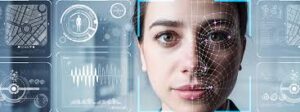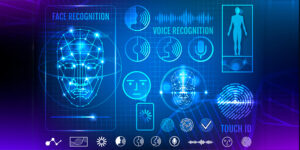Introduction to Biometric Technology
Biometric technology is reshaping the landscape of security in ways we once only dreamed about. Imagine a world where your identity is as unique as your fingerprints or the contours of your face. Today, that’s not just fantasy—it’s reality. From unlocking smartphones to securing sensitive facilities, biometrics has become an integral part of our daily lives.
This innovative approach leverages our physical characteristics for heightened security measures that are difficult to duplicate or forge. As cyber threats grow more sophisticated, so too does the need for advanced solutions in protecting personal and organizational data. In this blog post, we’ll explore how biometric technology has evolved, its various forms like fingerprint scanning and facial recognition, and what lies ahead for this fascinating field. Join us on this journey into the realm of biometrics and discover why it’s becoming synonymous with cutting-edge security today!
History and Evolution of Biometrics in Security
 The journey of biometrics in security dates back to ancient civilizations. The Babylonians used fingerprint impressions on clay tablets for transactions as early as 500 B.
The journey of biometrics in security dates back to ancient civilizations. The Babylonians used fingerprint impressions on clay tablets for transactions as early as 500 B.
C. This basic method laid the groundwork for what would evolve into sophisticated identification systems.
Fast forward to the late 19th century, when law enforcement began adopting fingerprints for criminal identification. Sir Francis Galton’s work on fingerprint patterns revolutionized this approach, leading to its formal integration into police procedures by the early 1900s.
As technology advanced, so did biometric methods. The introduction of facial recognition software in the late 20th century marked a significant leap forward. Today’s systems utilize artificial intelligence and machine learning to enhance accuracy and processing speed.
From simple prints to complex algorithms, biometrics has transformed dramatically over time, becoming an essential tool in modern security frameworks worldwide.
Types of Biometric Identification Methods
 Biometric identification methods come in various forms, each utilizing unique human characteristics. Fingerprint recognition is one of the oldest and most widely used techniques. It analyzes the distinct patterns found on an individual’s fingertips.
Biometric identification methods come in various forms, each utilizing unique human characteristics. Fingerprint recognition is one of the oldest and most widely used techniques. It analyzes the distinct patterns found on an individual’s fingertips.
Iris recognition offers another layer of security by scanning the unique patterns in a person’s iris. This method boasts high accuracy due to the complexity of eye structures.
Facial recognition technology has gained popularity recently, thanks to advancements in artificial intelligence. Cameras capture facial features and compare them against databases for rapid identification.
Voice recognition relies on analyzing vocal traits and inflections, making it suitable for secure phone systems.
Palm vein scanning examines vascular patterns within a person’s hand. Each method provides distinct benefits and varying levels of security suited for different applications across sectors such as banking, law enforcement, and access control.
Advantages and Disadvantages of Biometric Security

Biometric security systems offer a range of advantages. They provide enhanced accuracy in identity verification, reducing the chances of unauthorized access. Unique biological traits like fingerprints and facial features make it difficult for imposters to succeed.
Convenience is another big plus. Users can unlock devices or gain entry without needing passwords or PINs, which can be forgotten or stolen. This streamlining promotes efficiency in both personal and professional settings.
However, there are drawbacks to consider as well. Biometric data storage poses significant privacy risks; if compromised, individuals could face lifelong consequences since their biometric identifiers cannot be changed like passwords.
Additionally, the technology isn’t foolproof. Environmental conditions may affect performance—fingerprints can smudge or faces might not be recognized due to lighting issues.
The balance between benefits and concerns continues to shape discussions around biometric implementation in security frameworks worldwide.
Common Uses of Biometric Technology in Security
Biometric technology is making waves across various security sectors. One of the most common applications is in smartphones. Fingerprint sensors and facial recognition systems unlock devices, providing a secure yet convenient user experience.
In banking, biometric authentication has become essential. Customers can access accounts through fingerprints or voice recognition, adding an extra layer of protection against fraud.
Airports are also adopting biometrics for smoother passenger experiences. Facial recognition speeds up identity verification during check-ins and boarding processes.
Corporate environments utilize this technology too. Biometric access control systems restrict entry to sensitive areas based on unique physical traits like iris patterns.
Healthcare facilities benefit from biometrics as well. Patient records can be securely accessed using fingerprint scanners, ensuring that only authorized personnel gain access to sensitive information.
These diverse applications highlight how versatile and impactful biometric technology has become in enhancing security measures across different domains.
The Future of Biometric Security
The future of biometric security is poised for transformative advancements. As technology evolves, we can expect more sophisticated identification methods to emerge.
Artificial intelligence will play a crucial role in enhancing accuracy and speed. This means faster verification processes with reduced error rates.
Wearable devices are on the rise, integrating biometric capabilities seamlessly into our daily lives. Imagine unlocking your phone with just a glance or using voice recognition to access sensitive information.
Moreover, blockchain technology may provide additional layers of security for storing biometric data. This could help mitigate privacy concerns while ensuring secure transactions.
Collaboration between tech firms and regulatory bodies will be vital in shaping ethical standards around biometrics. Striking the right balance between innovation and privacy protection can pave the way for widespread adoption without compromising individual rights.
Ethical and Privacy Concerns Surrounding Biometrics
As biometric technology advances, ethical and privacy concerns intensify. Collecting data such as fingerprints and facial recognition information poses risks. Who owns this data once it’s captured?
Unauthorized access can lead to identity theft or misuse. Data breaches expose sensitive biometric profiles, making individuals vulnerable. Unlike passwords, you can’t simply change your fingerprint.
Consent is another critical issue. Many users aren’t fully aware of how their biometric data will be used or shared. Transparency in data handling is essential yet often lacking.
Surveillance also raises alarms; constant monitoring through face recognition can create a chilling effect on personal freedoms.
The balance between security and individual rights remains delicate as society grapples with these growing dilemmas surrounding biometrics in everyday life. Engaging in discussions about policies and regulations becomes crucial for safeguarding both privacy and security interests moving forward.
Conclusion
Biometric technology has revolutionized the way we approach security. Its journey from early fingerprint analysis to advanced face recognition systems illustrates remarkable progress. The variety of biometric identification methods available today cater to diverse needs, each with unique strengths and weaknesses.
While biometric security offers significant advantages—such as increased accuracy and convenience—it also presents challenges related to privacy and ethics. These complexities must be navigated carefully as applications expand across industries.
The future of biometrics is promising, with innovations on the horizon that could enhance security measures even further. However, it’s essential for developers, businesses, and consumers alike to remain vigilant about ethical considerations while embracing these advancements.
As society increasingly relies on biometric solutions in daily life—from unlocking devices to securing sensitive data—the dialogue surrounding their role will only grow more important. Balancing technological benefits with individual rights will shape how biometrics integrate into our lives moving forward.








